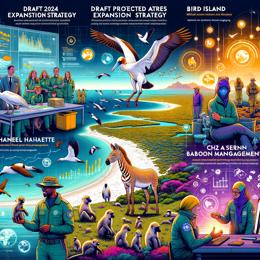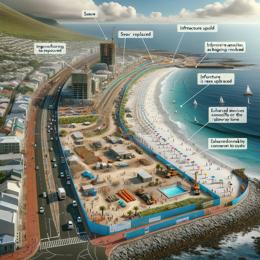Content created by AI
Defining Angola's Critical Water Tower: A Vital Source of Life for Southern Africa
The importance of water towers in sustaining life and agriculture in regions far beyond their immediate surroundings is well-recognized around the globe. However, one of Africa's most critical water towers had not been precisely defined until the recent study spearheaded by a team from the National Geographic Okavango Wilderness Project.
The revelation that Angola's Highlands, without snow or ice, serves as a "water tower" for Southern Africa is a significant development in both hydrological science and environmental conservation. This study is not just a declaration of Angola's strategic ecological position but also a call to action for preservation efforts in the region.
Angola's highland regions store colossal quantities of fresh water which replenish river systems crucial to the livelihoods of countless communities and ecosystems. These reserves are all the more remarkable considering the distinctive method through which they are replenished - not by snowmelt but by consistent rainfall, groundwater flow, and peatland reserves. This intricate and finely-tuned natural system underlines the uniqueness of the Angolan Highlands Water Tower as a life-sustaining source for the otherwise arid landscapes of Southern Africa.
The quantitative findings of the study, an average annual precipitation of 423 cubic kilometers, indicate the sheer volume of freshwater contributed by these highlands to various countries, including Angola, Zambia, Zimbabwe, Mozambique, the Democratic Republic of Congo, Namibia, and Botswana. Additionally, the Angolan water tower feeds into pivotal basin systems, not least of which is the UNESCO-recognized Okavango Delta. A remarkable 95% of the Delta's water finds its origin in these highlands, emphasizing their far-reaching significance.
With the delineation of the water tower's boundaries, the scope of responsibility towards conservation efforts in the region is unmistakably outlined. Yet, despite the essential nature of these highlands, they lack formal protections that could safeguard their resources for future generations. The barriers to this – landmines from past conflicts, limited access, and the socio-economic challenges of local populations – are stark reminders of the complex web of environmental and human issues that intertwine in conservation efforts.
The study also addresses the potential threats to these water resources, with climate change being underscored as a critical concern. Uncontrolled timber production, unsustainable development, and an increasing human population are additional challenges. It advocates for a wise stewardship approach, integrating local and traditional knowledge with modern conservation practices, which could serve as a blueprint for similar regions across Africa.
As the need for sustainability becomes more pressing in the face of climatic instability, this study serves as a beacon, highlighting the potential for a concerted, regional approach to environmental management.
The findings also underscore the necessity for strategic global conservation partnerships. With Angola lacking any Ramsar-inscribed wetlands, drawing international attention towards its highlands could leverage support for protective designations. Such international frameworks can elevate local conservation initiatives, providing the springboard to establish larger networks of recognized terrestrial and aquatic systems vital for biodiversity and human well-being.
In conclusion, defining the Angolan Highlands Water Tower is an essential step in acknowledging and safeguarding the remarkable natural processes that fuel life in Southern Africa. With continued collaborative efforts on a local and global scale, practices can be developed that secure the future of these landscapes and the people and wildlife relying on them.










